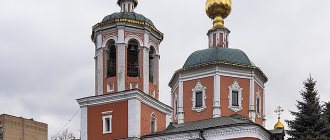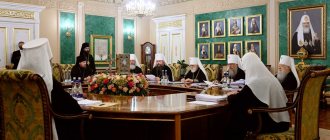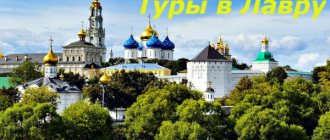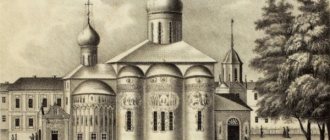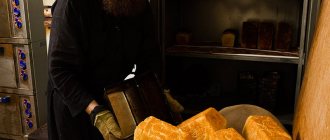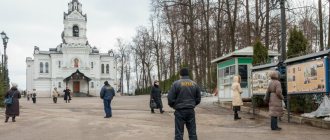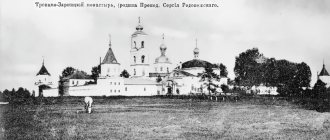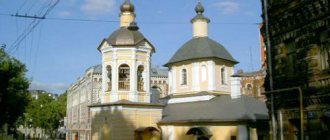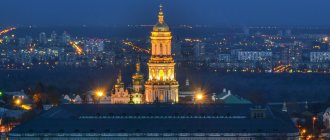The Trinity Lavra of Sergius is one of the greatest shrines of Russian Orthodoxy, a monastery headed personally by the Patriarch. Its founder is considered to be the Venerable Sergius of Radonezh, whose veneration was established spontaneously even before the introduction of canonization. During his lifetime he became famous for his sermons and miracles, and had an incomprehensibly high authority among the authorities and the people. He changed the monastic charter to a communal one, which made the monastic monasteries active participants in the feudal structure of society.
Having settled in the place where the Trinity Lavra of Sergius is now, a descendant of a boyar family voluntarily became a servant of God. He didn’t even take charge of the created monastery right away; the first abbot was the one who tonsured Sergius, and in the world – Bartholomew. Combining personal modesty, miraculously acquired literacy and oratory, Sergius of Radonezh gained wide fame. First his fellow monastics listened to him, then the surrounding population and the powers that be. The monk is considered the main inspirer of liberation from the 300-year yoke.
Trinity Sergius Lavra, high-altitude inspection
It makes no sense to tell what the site of the future monastery looked like before; now the Trinity Lavra of Sergius is the front showcase of the Russian Orthodox Church. Modern technical means, not yet prohibited, help to show it comprehensively from different heights. The northernmost point of the territory is located in its only sharp corner, on the right in the first high-altitude photo. The straight eastern wall of the monastery is equipped with two entrances, in a small park in front of it there is a monument to Sergius of Radonezh. The statue was made by sculptor Chukharkin and consecrated by Alexy II in 2000.
The Trinity Lavra of Sergius was equipped with fortress walls and watchtowers in the 16th – 17th centuries. The monasteries were real defensive strongholds, equipped with the most advanced fortifications of that time. During the Time of Troubles, the monastery withstood a long-term siege for more than a year, defending the treasury and territory. The main entrance to the territory is formed by the Holy Gate, later the Assumption Gate was built nearby, on the axis of the cathedral of the same name.
Descending to the northwest corner
The device launched from the north-west transmitted photos from the side of the watchtowers and the tented church. In the foreground is the Carpenter's Tower, protruding beyond the line of walls for defense against the approaching enemy. Nearby, the Kalichya Tower, different from all the others, consists of several tiers, topped with an original pyramidal roof. An extended building with a single dome - the Royal Palace with the house church of the Intercession of the Blessed Virgin Mary. The temple is distinguished by a faceted gilded dome.
Immediately behind the Carpenter's Tower is the mentioned tented church of Zosima and Savvaty, built in the first half of the 17th century. At the same time, the Hospital Chambers were built, where there was a hospital, and now - the residence of the Viceroy of the monastery. This is a church official who administers the Trinity Lavra of Sergius on a daily basis, without bothering the patriarch. Between the tented church and the main bell tower is a small church of the Smolensk Icon of the Mother of God, built by the architect Ukhtomsky who completed the belfry.
Continuing descent from the east
We will still see the gate church in the foreground, as well as the painted Church of St. Sergius of Radonezh with the Refectory located behind it. The perspective demonstrates the dominant position of the Assumption Cathedral, the largest building of the monastery, which began construction by order of Ivan the Terrible. They built it by analogy with its Moscow namesake, the Kremlin Assumption Cathedral, but the one here turned out to be larger. Ivan Vasilyevich did not wait for the consecration; construction took more than a quarter of a century.
It is better to talk about the bell tower with a more detailed demonstration, as well as about the oldest temple, which has the Trinity Lavra of St. Sergius. The Trinity Cathedral is noticeable with its abundant gilding of the dome and roofs; you can see the long line to the relics of the founder of the monastery. In this photo, it is worth paying attention to the use of decorative landscaping, which differs from secular objects. They do not follow any of the extreme design styles, landscape or regular. Trees, bushes and grassy lawns do not distract attention from the main reason why the Trinity Lavra of St. Sergius exists.
The difference between a monk and a monk and who is the abbot
The word monk
- a borrowing from the Greek language, in which monachos is formed on the basis of the word monos - one.
Enoch
- tracing paper from this Greek word, means - different, living differently. In the days of epics, monks in Rus' were called monks, and if you open an old dictionary, it is written there in black and white that the words are synonyms.
But in practice, at present, these concepts are somewhat different. In Orthodox monasteries, a monk is a person who lives here and wears monastic clothes, but has not yet taken vows. He can return to his former worldly life at any time. Here is a figurative analogy - a bride engaged to her groom, already having a direct relationship with him, but still not his wife yet.
A monk is a person who has already made unbreakable vows, for whom returning to his former life is no longer possible.
But the way of life of both differs little, so from this point of view both concepts are equivalent. Actually, all monks are monks.
But not every monk is a priest.
Gone are the days when the figure of a priest seemed funny, amusing, or simply out of this world. Now people are slowly again reaching out to the church, the representative of which is the priest. Who is this?
Priest
- This is a spiritual person, a mediator between man and God. He can be either a monk who has taken a vow of celibacy (black clergy) or a married and secular person (this type of clergy is called white).
This is chosen by the person himself even before his ordination as a deacon. There is a certain church hierarchy - three degrees of priesthood, which differ in the degree of fullness of Grace received directly from the Lord during ordination. It is this received Grace that allows clergy to perform the sacraments and lead the spiritual life of their flock.
| The clergy is divided into: | |
| married, so-called WHITE | monastic, so-called BLACK |
| sacred rank - first, lowest | |
| 1) Deacon | 1) Hierodeacon |
| 2) Protodeacon | 2) Archdeacon |
| higher sacred rank | |
| 1) Priest | 1) Hieromonk |
| 2) Archpriest | 2) Hegumen |
| 3) Mitred Archpriest | 3) Archimandrite |
| highest church rank | |
| No | 1) Bishop 2) Archbishop 3) Metropolitan 4) Patriarch |
Behind the bars of the cast-iron monastery fence, near the Royal Palaces, hides the Academic Foundation of the Trinity-Sergius Monastery. It is represented by the Theological Seminary and the Theological Academy.
They are related in much the same way as university and graduate school. Having overcome a large competition, young men 18 years of age and older enter the seminary and study there according to the university system we are accustomed to with sessions. Graduates of the seminary enter the Moscow Theological Academy; the selection is even more strict; C grade students are not accepted here.
The progenitor of the academy was the famous and illustrious Slavic-Greek-Latin Academy, which gave our country many scientists, writers, philosophers, scientists and, of course, major spiritual figures. What is her student worth - Mikhailo Lomonosov! This is where the Russian doctor Postnikov came out! The famous mathematician Magnitsky! Diplomat, poet, translator Cantemir and many others.
Beginning of a walking tour of the monastery territory
The Trinity Lavra of Sergius receives its many visitors through the main entrance from the west, from the Moscow road. The passage is organized into the arch of the Red Tower, not in the sense of color, but because of beauty and solemnity. The tower itself is completely white, like the fortress walls into which it is built. The entrance was equipped with a figured portal at the beginning of the 19th century; it is distinguished by its color and rich decoration. The entrance arch is framed with colorful stucco molding, and there are pilasters with capitals on the sides. The pediment is equally colorful, with an icon of the Holy Trinity on it.
The upper part of the Red Tower is decorated with an arcade; there are images of the Savior, Our Lady and Sergius of Radonezh. The configuration of the combat embrasures, with a downward sloping plane for firing at advancing enemies, attracts attention. The loopholes were tested during the Time of Troubles; memorial plaques remind of the 300th anniversary of those events. They were installed by the Imperial Military Historical Society, were removed under the Bolsheviks, and have now been restored. One can argue about their appropriateness at a religious site, but this is a historical memory.
Painted life of Sergius of Radonezh
The arched corridor in the Red Tower is painted with works of modern icon painters, copying the style of old masters. Episodes from the biography of the founder of the monastery, or according to the church, the life of St. Sergius of Radonezh, are presented. Not only the Trinity Lavra of Sergius owes him, all Russian people, he inspired their ancestors to fight the Horde. The paintings depict the saint’s real affairs and life situations, but the surroundings are clearly fictitious. However, this does not look absurd, just a flight of imagination, a touch of fabulousness.
St. Sergius is presented in settings that never accompanied his life, shown against the backdrop of majestic buildings. Many wonderful birds are an allegory of the disciples of the preacher and mentor, called to continue his work. The picture can be called visionary in meaning, but it was written based on already known facts. The adjacent scene of the blessing of Prince Dmitry, the future Donskoy, is no less expressive and full of symbolism. According to chronicle memoirs, the saint accompanied the soldiers to battle with assurances of God’s support.
A look at the gate church
Seen from above, the gateway Church of the Nativity of John the Baptist looks neat and fresh, although it was built in 1699. The Trinity Lavra of St. Sergius was financed by the then successful industrialist and generous philanthropist Grigory Stroganov. Having inherited many lands and serfs, he became rich, not in the most righteous way, from salt mining. To atone for sinful actions, he donated a lot to monasteries and built several churches. They even singled out an architectural direction - Stroganov baroque, which combined folk features, five-domed churches with baroque pomp.
Turning around and looking at the temple from below, it is impossible to fully grasp its appearance. However, what is visible also allows one to get the impression that the device and especially the coloring are unusual. Very contrasting, purely geometric ornaments are not at all characteristic of folk architecture; they are something foreign. The columns entwined with vines are quite nice, the capitals are well made, and the arches made of shells look interesting. The sectorial gilded domes, much wider than the light drums, resemble oversized hats.
Trinity Sergius Lavra immediately after entering the territory
From the arch of the gate church, visitors find themselves at a fork between three temples, at short distances. The Church of St. Sergius of Radonezh is poorly visible behind the trees; you will still come across it when going around. In the center there is a triangular lawn with burial crosses and the apse of the Church of the Descent of the Holy Spirit, which we will also see from a better angle. From here it is clearly seen that the only chapter in this church plays the role of a bell tower, which is quite rare in religious architecture. The coloring of the dome is unusual, as if divided in two by a golden stripe.
In a straight line in the distance is the building of the Treasury building, the building of the financial department, the Trinity Lavra of Sergius had it for economic activities. From here you can also appreciate the decorative decoration that adorns the Trinity Lavra of St. Sergius. The tree plantations are not impressive in size, but the thickness of the trunks shows serious age. By skillful pruning, compact crowns are formed, which are somewhat small for trunks of such diameters. The flower growers of the monastery do their work diligently, the flower beds are neat and well-groomed.
Temples and other buildings with which the Trinity Lavra of Sergius is rich
Until now, briefly noted, the largest temple, around which the entire Trinity Lavra of St. Sergius seems to be built, is in fact not the oldest. But the order by Ivan the Terrible himself, as mentioned, and the completion date - 1585 - speak for themselves. There was a clear similarity with the Moscow analogue, but many find common features with the Novgorod St. Sophia Cathedral. Here the symbolism of the colors of the domes is interpreted as follows: the golden main one is dedicated to the Savior, the blue ones with gold stars are dedicated to the Mother of God, this is traditional.
At the same time, the similarity with the Novgorod Sophia is limited to arched walls and a five-domed structure, and is disrupted by a bulky entrance porch and slightly protruding apses. The painted arches above the apse look picturesque; the background of the paintings with heaven echoes the colors of the domes. Since this visit does not involve inspection of the interiors, let’s just talk about the main relic of the cathedral. He keeps a wooden coffin that contained the relics of Sergius of Radonezh from the day of his repose until 1585.
Temple in honor of the Descent of the Holy Spirit on the Apostles
The named temple is only half a century younger than the oldest of all that has the Trinity Lavra of St. Sergius. All the others are inferior to him in age, although the veteran does not look at all like an old man. A bell tower combined with the light drum of a single dome is a rather rare planning solution in Orthodoxy. In the old days, such belfries were called alarm bells; the bell there rang in case of imminent danger. He successfully fulfilled his role during the Time of Troubles, during the Polish-Lithuanian blockade.
The Spiritual Church kept the relics of the religious publicist Maxim the Greek and the governor Anthony, who ruled the Trinity Lavra of Sergius for 46 years. Now the remains have been transferred to the Church of Sergius of Radonezh; here remains the tombstone of Moscow Metropolitan Platon (Levshin), which we will soon remember. The architectural features of the temple are memorable, in particular the high apses, almost reaching the top of the zakomari. The bell openings are decorated with kokoshniks, the sound was amplified, directed into the resonator dome.
Finally, the oldest temple - Trinity Cathedral
Trinity Cathedral was built in 1423, the architect was a student of St. Sergius, monk Nikon of Radonezh. It was he who inherited the abbess of the monastery, actively engaged in parallel construction activities. The cathedral was built in a record year, and it is structurally quite simple. The walls have three dividing blades with keel-shaped zakomaras, in the center of the quadrangle there is a base and a cylindrical light drum with a dome. Here the Trinity Lavra of Sergius preserves the main relic - the relics of the founder in a silver shrine.
The remains of Sergius of Radonezh were discovered during the construction process; they were revealed to Nikon personally. There are always a lot of people near the cathedral who want to touch the relic. To the south of the apses of the cathedral, another one is visible, which is not immediately clear. Only by looking closely can you determine that there is another church nearby. It can be mistaken for the southern aisle of the Trinity Cathedral, which was originally intended to be so. Nikon's Church was built in 1548 over the grave of the cathedral's architect; both churches are single-domed, with gilded roofs and domes.
Kamo is coming
Having joined the endless flow of life and people, we find ourselves in the beautiful, well-groomed, cozy territory of the Trinity-Sergius Monastery. There is a lot of greenery, flowers everywhere, it is quiet and peaceful.
Ahead, in front of the Trinity Church, there is a long tail of the queue to the relics of the saint. When did this happen? Perhaps before the revolution, but certainly not during Soviet times. There are modern people in the queue, many young people. What brought them to the Trinity-Sergius Monastery, what do they want to ask the abbot of the Russian land Sergius of Radonezh, in what matters do they need the prayerful help of the saint?
At one of the meetings with the president, Pavel Astakhov presented data from a survey of first-year students at Moscow State University and a number of other higher educational institutions. The questions concerned the values that dominate the minds of modern youth. Material well-being came first, and such concepts as conscience and honor were relegated to the end of the list.
Do you think that these were only young Muscovites? No, the students represented different parts of our country. Our people stand on a certain brink, just like at the time when Abbot Sergius of Radonezh lived and when in his life he showed the miracle of saving Rus' from spiritual decay. How we need people like St. Sergius!
Monument about the significance of the Lavra and its surroundings
The small square between the Trinity and Assumption Cathedrals is decorated with a monument that marks how the Trinity of St. Sergius Lavra entered history. It was erected under the already mentioned Moscow Metropolitan Platon (Levshin) in 1792. On the edges of the stele there are copper plaques with texts about the heroic periods of the monastery’s existence. This is the blessing of the troops of Prince Dmitry, the siege of the Time of Troubles, the militia of Minin and Pozharsky, the shelter of Peter I during the Streltsy riots. The reading sequence is starting from the south, counterclockwise.
However, the manufacturers of coinage numbered them with Roman numerals. The texts are written in an old font, but are read with interest. The second feature of the obelisk was the sundial installed on the sides, except for the northern one; the stele was crowned with a gilded ball. The monument is small and not very flashy, and it is its restraint that makes it attractive. From here you can examine the western facades of the Assumption Cathedral and the Spiritual Church, and there are two more small but very noticeable buildings.
Assumption well and its use
The pink building in the background is the Overhouse Chapel from 1700, installed above the opened source of miraculous water. It was discovered somewhat earlier than the construction of the chapel, during the repair of the foundations of the Assumption Cathedral, and is named after him. The chapel is designed as an unusually shaped tower; it is colorful, but a little clumsy among the strict churches. However, the Trinity of St. Sergius Lavra has not become any worse due to such a structure; it attracts the attention of visitors. The water flows from there into the neighboring, even brighter gazebo.
This building generally looks like a park pavilion with a fountain, and some visitors perceive it as such. The central cross pours excess water into the pool to perform the blessing of water. Where the Trinity Lavra of Sergius uses them the rest of the time is unknown. It is correct to call this structure a canopy over the cross, informed sources suggested. According to them, the construction was completed in 1872, but the authorship has not been established. The design of the vestibule is even less consistent with the monastery, although they are not averse to communicating with laywomen.
Prayers
Troparion, tone 3
Seeking the will of God in your life, / the prophecy of the Venerable Seraphim / and the Heavenly calling through St. Philaret / you accepted to serve in the great Lavra. / You were the true keeper of the covenants of Abba Sergius, / a godly mentor of monks, / and a skilled beautifier of the Lavra, you appeared. / Now , standing before the Throne of the Holy Trinity, Reverend Father Anthony, pray for our souls to be saved
.
Kontakion, tone 2
Desiring to improve those above, O blessed one, / from your youth you followed Christ, / you were a jealous father through the feat and character of the saints, / you acquired the grace of a peaceful spirit. / For this reason, to the multitude of monks / and to all who flocked to you / you appeared as a merciful father. / Also, with love, you cried :/Hail Anthony,// Laurels of Sergius praise and decoration of the Russian Church
.
Prayer
O Venerable Father Anthony, worthy successor of the great Abba Sergius, executor of the instructions of the Venerable Seraphim, friend and companion of St. Philaret, teacher of monks and all zealots of piety! Pray to the all-merciful Christ our God and His Most Pure Mother for the Church and our Fatherland to remain in peace and silence, the monastery of Sergius, where the great name of the Most Holy Trinity is glorified, to remain unshakable, and for the spiritual school that dwells in it to be established in the Orthodox faith. Ask us through your prayers from the Most Holy Trinity for the grace to seek and fulfill the will of God, to live through the labors of repentance, to endure sorrow, illness and temptation with thanksgiving, to acquire a peaceful spirit and seek first the Kingdom of God, in which you glorified with all the saints the Father and the Son and the Holy Spirit. Amen
.
Bell tower, the high-rise dominant of the monastery
To the north of the monument about its own heroic history, the Trinity of Sergius Lavra is shaded by its tallest structure. Initially, the belfry was supposed to be three-tiered, which is how the court architects Schumacher and Michurin saw it. Dmitry Ukhtomsky, who studied with Michurin and inherited the position of chief architect of Moscow, was entrusted with carrying out his own project. He increased the height of the structure to almost 88 meters, surpassing the bell tower of Ivan the Great by 6 meters. The decorations were forced to be simplified against those proposed.
Nevertheless, the bell tower of the Trinity Lavra of Sergius was remarkable in all respects. It’s not for nothing that three decades have passed since the decision to build it and the performers have changed. A solid quadrangle, visually lightened by pilasters, is crowned by four smaller tiers. They are decorated with paired columns with small porticoes, decorated with vases in the corners. Open openings and narrowing contours create the impression of airy lightness. The unusual completion of the bell tower looks colorful, and not only due to the gilding.
The closest neighborhood is the tomb of the Godunovs
Less than twenty meters separate the Godunovs’ tomb from the bell tower, where the remains of the tragic king and his family rest. The building, which has an unusual appearance, was erected in 1782, much later than the sudden death of Boris Fedorovich. The naturalness of his death has been questioned, but no malicious intent has been proven. In the same way, Godunov was suspected of eliminating Tsarevich Dmitry, the youngest son of Ivan the Terrible. The appearance of doubles of the deceased heir to the throne was predetermined; the Time of Troubles broke out.
How the Trinity of Sergius Lavra manifested itself during this period was already noted in the review and immortalized by the monument. At the same time, the reasons for the burial of the Godunov family here are not entirely clear. However, 13 years of regency plus 7 years of rule after legal election (although there were doubters) is a lot for Russia. But let’s not bother with historical mysteries, the answers to which we cannot give. The tomb stands at the main entrance to the largest temple on the territory of the oldest monastery, and does not disturb anyone.
Church of St. Sergius of Radonezh with a refectory
The Church of St. Sergius of Radonezh with a refectory, sometimes called simply the Refectory Church, was built at the end of the 17th century. The customers were the joint rulers Peter I and Ivan V, to whom the Trinity Lavra of Sergius was no stranger to the place. It is not clear why this idea came to the minds of the young men, but subsequently the church delighted many. The building, about 80 meters long, had a unique vault without intermediate supports and was distinguished by skillful, colorful decoration. The exterior coloring is partially similar to the entrance gate church.
The above applies not only to the colored ornament of triangles; the columns and their capitals are made similar. The similarity is noticeable not only in the forms, but also in the decoration, including shell arches. A wide porch with steps leads to the entrance and spacious veranda above the ground floor. Due to this, the refectory and the church itself are raised above ground level. It should be noted that there is little that reminds us of the religious purpose of the building. Perhaps, apart from the icons at the entrance and above it and the lonely dome on the drum, there is nothing to name.
Details of the design of the Church of Sergius of Radonezh
Upon closer examination, many decorative elements of the Church of St. Sergius of Radonezh seem original. It is worth taking a closer look at the design of the canopy between the entrance and the balustrade, and paying attention to the decoration of the paired arches, especially the columns. They are not like painted grape vines; here they are carved on natural stone. Moreover, the trunks are made as a single unit with the capitals on which the canopy portal rests. And there are no dividing seams visible on it, it looks like a monolithic slab with skillful processing.
It is difficult to describe the design of window openings as anything other than excellent, there is so much originality and invention. Each window is like a separate facade of the building, although they are identical in design and decoration. The columns are displayed on consoles, walled into the wall, supporting miniature portals with stucco pediments. Each opening contains an image of a saint in an icon case; the pediments are carefully protected by the likeness of roofs. There was also a place for onions like domes, displayed at the corners of the portals. The Trinity Lavra of Sergius was finally captivated by this building.
Carving on window columns, no matter how clumsy it may sound, is more complex than on canopy columns. Berries in clusters, leaves and some patterns are drawn here. The capitals are not as massive, but the scrolls are more deeply carved. The overhead halves of long columns running between the windows, smooth, with a pattern of the same grape vines, echo the colors of the ornaments on the walls. In general, the decoration of the Church of St. Sergius of Radonezh is quite capable of charming; the temple is quite worthy of being an adornment of the Trinity Lavra of St. Sergius.
What do priests study?
The class schedule includes the usual disciplines - a course in philosophy, history, and there are purely spiritual subjects necessary for Orthodox education - church law, history of the Russian church, theology. The curriculum also includes completely exotic names, ones that I’m sure most of us have never even heard of – patrolology, exegesis, liturgics, apologetics.
Students study languages - Russian, the ancient dead - Latin, ancient Greek, one of the modern European languages, optionally some eastern language - Chinese, or, for example, Korean, or Arabic, Syrian... They are fluent in the Internet. Of course, they play sports. Also - participation in divine services, duty in the dining room, washing dishes, and other similar household duties. The day is strictly scheduled minute by minute, there is almost no free time.
One aspect of a priest’s ministry is providing psychological assistance. Therefore, a lot of attention is paid to psychology during training. The specifics of priestly work require the ability to find an approach to different people.
And, not only to people, but also to nations.
Do you know, friends, that there are now 225 million Orthodox Christians in the world? Interest in our faith is steadily growing, and the number of Orthodox Christians in different countries will become even greater in the 21st century.
A priest, bringing the Word of God to his flock, must be diplomatic, subtle, and take into account local folk traditions. For example, during services in Russian churches people stand. And on the African continent, Orthodox Christians in Uganda, Sierra Leone (yes, yes, there are some there, no wonder! Not only in Egypt!), they have the custom of squatting during services...
By the end of the seminary, a young man needs to decide what to choose: either monasticism, devoting himself entirely to serving God, or, choosing marriage, becoming a parish priest. Statistics say that only 20 percent of graduates choose monasticism, and 80 percent of seminarians get married.
However, only representatives of the black clergy can become the highest hierarchs of our Orthodox Church.
At the end of the training, traditionally, there is a defense of diplomas. And listen: a diploma obtained through years of hard work, the result of the most difficult training, has status only in church structures, the state does not recognize it! Indeed, people come here not for a diploma, but to become closer to God. True, now the church leadership has come to the conclusion that state accreditation is necessary, so the issue with the recognition of diplomas will apparently soon be resolved.
Yes, we completely forgot, who is the abbot
? In the time of Sergius of Radonezh, an abbot was a monk who led a monastery and other monks; now it is also a certain rank of a priest-monk, which is higher, say, than a hierodeacon, but lower than an archbishop. Well, sort of like in the army. Private, lieutenant, captain, major...
